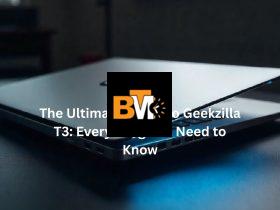Technical SEO is an essential aspect of website optimization that focuses on improving the backend elements of your site to ensure it is properly indexed and ranked by search engines. Addressing common Technical SEO solutions can have a significant impact on your website’s visibility and performance. In this article, we’ll discuss how to fix several common technical SEO issues with simple solutions that anyone can implement.
1. Slow Page Load Speed
a. Identify the Causes of Slow Speed
One of the most critical aspects of technical SEO is page load speed. Slow-loading pages not only hurt user experience but can also negatively impact your rankings. Some of the most common culprits behind slow page speed include large image sizes, excessive HTTP requests, and unoptimized scripts or CSS files.
b. Simple Solutions to Improve Speed
To fix these speed-related issues, start by optimizing your images. Use formats like WebP for smaller file sizes and ensure that images are appropriately sized for their display. Additionally, consider using tools that automatically compress images to improve performance.
Minify your CSS, JavaScript, and HTML files by removing unnecessary spaces, comments, and redundant code. This can reduce the overall page size and make it load faster. You should also use a Content Delivery Network (CDN) to distribute your site’s static content across multiple servers worldwide, speeding up load times for users regardless of their location.
Finally, enable browser caching to store certain files locally in users’ browsers. This allows subsequent visits to your site to load faster as resources do not need to be downloaded again.
2. Crawlability and Indexing Issues
a. Common Causes of Crawlability Problems
Search engines need to be able to crawl and index your site to rank it. If your site has crawlability or indexing issues, it could prevent your pages from appearing in search results. Some common causes include blocked resources in the robots.txt file, poor site architecture, or broken internal links.
b. How to Fix Crawlability Issues
Ensure that your robots.txt file is correctly configured. This file tells search engines which parts of your site they can crawl and which they should avoid. Be sure you’re not blocking important resources like CSS or JavaScript files that search engines need to render your pages.
Use an XML sitemap and submit it to Google Search Console and Bing Webmaster Tools. This helps search engines understand the structure of your site and find all the pages they need to index.
Additionally, fix any broken links on your site, and use proper redirects (301 redirects) to guide users and search engines to the correct pages. A clear internal linking structure is also crucial in helping search engines crawl all of your pages efficiently.
3. Mobile Usability Problems
a. Importance of Mobile Optimization
With Google now using mobile-first indexing, ensuring that your website is mobile-friendly has never been more important. Mobile usability issues can lead to a poor user experience, higher bounce rates, and lower rankings.
b. Quick Fixes for Mobile Optimization
Ensure that your site has a responsive design, meaning it automatically adjusts to fit different screen sizes. You can check for mobile usability problems using Google’s Mobile-Friendly Test tool, which will highlight any issues.
Make sure fonts are legible, buttons are easy to tap, and navigation works seamlessly on smaller screens. It’s crucial to avoid large, unoptimized images or videos that can slow down mobile browsing.
4. Duplicate Content Issues
a. Why Duplicate Content Hurts SEO
Duplicate content is when the same or very similar content appears on multiple pages of your site or on other websites. Search engines may have difficulty deciding which page to rank, leading to potential penalties or reduced visibility.
b. Solutions for Handling Duplicate Content
Use canonical tags to indicate the preferred version of a page to search engines. If you have multiple pages with similar content, the canonical tag directs search engines to the page you want to prioritize.
Additionally, implement proper pagination for longer content (like blog posts or product listings) to avoid duplicate content issues across paginated pages. If outdated pages are causing duplication, set up 301 redirects to guide users and search engines to the most relevant content.
5. Broken Links and 404 Errors
a. Impact of Broken Links on SEO
Broken links (or 404 errors) are a significant issue for both user experience and SEO. When search engines encounter broken links, it can hinder crawling efficiency, and users are less likely to stay on your site if they encounter dead ends.
b. How to Fix Broken Links
Use tools like Screaming Frog or Google Search Console to identify broken links across your site. Once identified, replace or remove any outdated links. If a link no longer leads to a useful page, set up a 301 redirect to guide visitors to a relevant page.
Regularly check for broken links to maintain a healthy website structure and ensure that both users and search engines have the best experience possible.
6. Missing or Improper Meta Tags
a. Importance of Meta Tags for SEO
Meta tags, including title tags and meta descriptions, are crucial for SEO. They not only tell search engines what a page is about but also influence how your pages appear in search results and on social media. If your meta tags are missing or incorrect, it can harm your rankings and click-through rates.
b. How to Correct Meta Tags
Ensure that each page has a unique and descriptive title tag and meta description. Use relevant keywords naturally in these tags to increase your chances of ranking higher for specific search queries. Make sure the meta description entices users to click on your link in search results.
Additionally, implement structured data (schema markup) where applicable to help search engines understand the content of your pages and display rich snippets in search results.
7. Poor URL Structure
a. Why Clean URLs Matter
Clean, descriptive URLs are not only easier for users to read and remember but also help search engines better understand your page content. A cluttered or complicated URL structure can hurt both SEO and user experience.
b. How to Optimize URLs
Keep your URLs short, descriptive, and relevant to the content of the page. Use hyphens to separate words (e.g., “best-seo-tips” instead of “best_seo_tips”). Avoid using unnecessary parameters or complex dynamic URLs that are hard for search engines to index.
8. HTTPS and Security Issues
a. Why HTTPS Is Critical for SEO
HTTPS (Hypertext Transfer Protocol Secure) is a secure version of HTTP, and Google has confirmed that it considers HTTPS a ranking factor. Sites without HTTPS are flagged as “Not Secure,” which can scare off users and negatively affect your SEO.
b. Fixing HTTPS Issues
To resolve HTTPS issues, install an SSL certificate to enable HTTPS on your website. Once installed, redirect HTTP pages to their HTTPS equivalents to ensure users are always directed to the secure version of your site.
Conclusion
By addressing common technical SEO issues such as slow page speeds, crawlability problems, mobile usability, and more, you can significantly improve your website’s performance and visibility. These simple solutions will not only enhance your user experience but also give search engines the right signals to rank your site effectively. For ongoing success, regularly perform technical audits and stay up-to-date with any changes in SEO best practices. For more in-depth assistance, consider partnering with experienced SEO agencies that can help you streamline your site’s backend and ensure it meets all SEO requirements. Regularly updating your website’s content, fixing broken links, and improving site structure are essential components of a successful long-term SEO strategy.







Leave a Reply